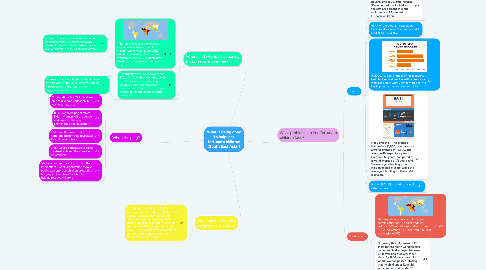
1. Who is helping?
1.1. Organisations like ChildFund are able to give free education in less fortunate areas
1.2. Blue Dragon helps get street kids in Vietnam off the streets and provides them with shelter, food and education
1.3. Children’s Defense Fund (CDF), nonprofit agency that advocates for children’s rights
1.4. Green Gecko educates and cares for street kids and their families in Cambodia.
1.5. Vietnam has been teaming up with the International Labor Organization to raise public awareness on children protection, bringing children back to school and helping rescued children.
2. Where and why is it happening most in some countries?
2.1. This map shows that lots of South East Asia have below 10% of children working, although some places like Pakistan, Myanmar, and Vietnam have 20%-30% of children working, and Nepal even has over 40%.
2.1.1. 60.5% of children in Nepal worked up to 19 hours a week in 2008, while 32.2% worked 20 to 40 hours a week and 7.3% worked for more than 40 hours in a week.
2.2. According to the Labor newspaper, 30% of children between the age of 6 to 17 in Vietnam are working. 26,027 of them are working in hazardous environment such as gold mines, timber operations or cargo transport.
2.2.1. There are many loopholes in Vietnam's law that no child could work under the age of fifteen because the laws are not "aggressively enforced".
3. What could help solve poverty/child labour?
3.1. According to Lire Ersado (2005), increasing access to banks will decrease poverty, because allowing families credit will give them a more stable income. Banning child labor would not help because the children would then have NO money and it may make them start to resort to more dangerous means of making money.
4. What problems do less fortunate children face?
4.1. Poverty
4.1.1. A census in Georgia shows that 354,633 children live below the poverty line in US. This includes 30 percent of black children in the state, 9 percent of white children, and 25 percent of Hispanic children
4.1.2. 66%+ of the Vietnam population live in rural areas and can earn as little as $1 - $2 a day.
4.1.3. In 2009/10, 53% of those living in poverty had children, and families with at least one workless parent were 7 times more likely to live in poverty than families with jobs.
4.1.4. Not using this - The average Haitian has $1,800, compared to a world average of 15,800. The average life expectancy for a Haitian is 63 years, compared to a world average of 71 years, and the average schooling for a Haitian child is 5 years, while the average schooling for the world is 8 years.
4.1.5. Nearly 385 million children living in extreme poverty
4.2. Child Labour
4.2.1. This map shows the amount of poverty in certain countries. The color code is: yellow (<10% of children working), green (10–20%), orange (20–30%), red (30–40%) and black (>40%)
4.2.2. Not using this - A census in 1900 showed that North Carolina mills had more children aged between 10-15 working than any other state. By 1906, only one child labour law had passed, stating that no child under 12 could work, and no child under 18 could work more than 66 hours a week.
